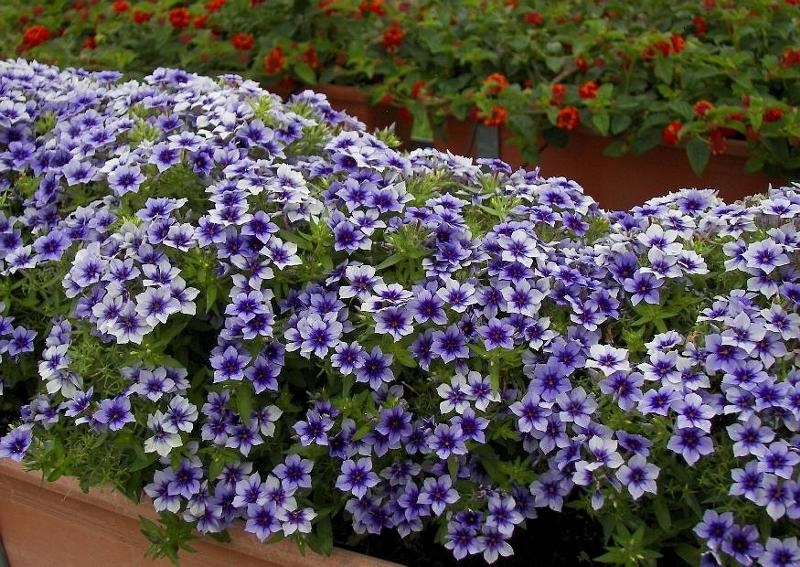 Annual phloxes are especially popular among flower growers due to their unpretentiousness, long and lush flowering. They are striking in the variety of varieties, shades and shapes of the petals compared to perennials. Phlox annuals look great on flowerbeds, alpine slides, near houses in decorative flowerpots. Growing them is easy, but you still need to know the features of sowing and care.
Annual phloxes are especially popular among flower growers due to their unpretentiousness, long and lush flowering. They are striking in the variety of varieties, shades and shapes of the petals compared to perennials. Phlox annuals look great on flowerbeds, alpine slides, near houses in decorative flowerpots. Growing them is easy, but you still need to know the features of sowing and care.
Content
View description
Phlox is an herbaceous plant of the family Cyanosis. The genus unites about 85 species, and only half of them are grown as a garden crop. The bushes are decorated with bright flowers with a pleasant aroma. Most species are perennials, only Drummond phlox is an annual. Originally from the southwestern United States, it is common in North America and Europe.
The stems of the annual phlox are thin, erect and branched. Plants reach a height of 60 cm. Varieties of semi-shrubs in the sun grow to 150 cm. The leaves are saturated green, whole, oval-lanceolate. On the shoot, they are placed opposite.
The flowers of the annual phlox are white, red, purple, pink, blue, beige, etc. In some varieties they are monophonic, and in others with a dark center. The shape of the petal can be needle-shaped or rounded. Varieties with double and semi-double flowers are bred. Their diameter is 2-4 cm. The buds are collected in corymbose inflorescences of several tens in each. Drummond Phlox exudes a strong aroma. Flowering begins in June and continues until the frosts. Seeds ripen in an oval shaped box.
The following varieties of annual phlox are distinguished:
- Star-shaped. It features brightly colored dissected petals. The shape of the flower resembles a star with an eye. Phlox reaches 30 cm in height, and undersized forms - up to 12 cm.
- Large flowered. The buds are large and varied in color. The stems are erect, up to 30 cm long. The varieties "High Fire Red" and "High White" look spectacular.
Varieties of Phlox Drummond
The most common are the following varieties of Phlox Drummond:
- "Star Rain". Flowers resemble stars, they are two-tone. The bushes reach a height of 50 cm. They tolerate drought and small frosts well.
- Chanel. Compact bushes are covered with terry, yellow-red inflorescences.
- "Shimmering Star." Bushes are stunted, up to 25 cm high. The flowers are large with pointed petals.
- "Promis pink." The variety is distinguished by large, double flowers. They have a rich pink color and a pleasant aroma. The height of the shoots is only 20 cm.
- "Constellation". The diameter of the flower is 3 cm. The shades of the petals are varied. The bushes are lush, branched.
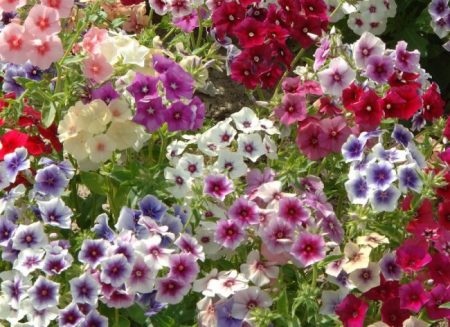
- Low-growing varieties are represented by phloxes “Shamoa” (pink), “Snow globe” (white), “Isabella” (yellow), “Salmon” (salmon) and “Defiance” (red). Due to the compactness of the bushes, they are often grown on balconies and verandas.
Sowing phlox annuals in open ground
Annual phlox is propagated by seed.They can be sown in open ground or grown in seedlings. Due to the dense shell, the seeds are difficult to germinate. Experts recommend a day before sowing to soak them in a light pink solution of potassium permanganate. Then the seeds must be dried by placing on a sunny windowsill.
The seeds of annual phlox are sown on a flowerbed in late autumn: in late October or early November. Plants planted for the winter will rise early in the spring and bloom quickly. Seeds are laid out at a distance of 4-5 cm. Then they are lightly sprinkled with earth. For this, purchased soil is suitable. In winter, crops are covered with a thick layer of snow to prevent their freezing. If necessary, young plants are planted so that the distance between them is at least 15 cm.
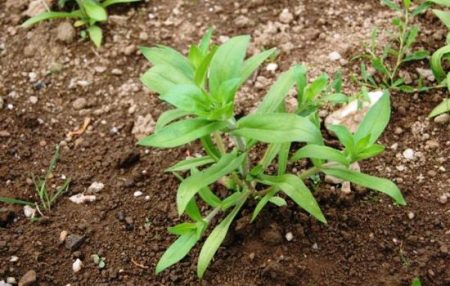 Drummond phlox can be sown in open ground in the spring. The optimal period is from late April to mid-May. The earth must be moist. With the threat of return frosts, seedlings protect by constructing a shelter. Phlox sown in the spring bloom in August or early September.
Drummond phlox can be sown in open ground in the spring. The optimal period is from late April to mid-May. The earth must be moist. With the threat of return frosts, seedlings protect by constructing a shelter. Phlox sown in the spring bloom in August or early September.
Growing seedlings
To obtain a longer flowering, annual phlox is grown through seedlings. This method is recommended for the northern and central regions. Given the duration of germination, the seeds are planted from late February to mid-March. Shoots will appear in 10-15 days. Phlox will bloom in early summer.
Seed preparation
Phlox Drummond is germinated in containers with sides not less than 10 cm high, because he has a well-developed root system. Suitable wooden boxes, plastic containers or special greenhouses. There should be drainage holes at the bottom of the tanks.
Soil for planting annual phlox can be purchased at the flower shop. It should be fertile, loose, with neutral acidity. It is easy to prepare soil mix independently. It is necessary to mix garden soil, compost and humus in a ratio of 1: 1: 1. To increase the friability, you can add river sand. The prepared soil should be shed with a weak solution of potassium permanganate to destroy pathogenic bacteria and fungi. A layer of soil 7-8 cm thick is poured into the containers. 3 days before sowing, it is well moistened.
Sowing phlox seedlings
In order for the shoots to appear together, it is necessary to adhere to such recommendations: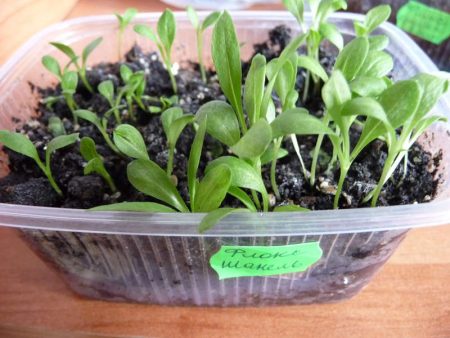
- Seeds are laid out on the surface of wet soil at a distance of 2-3 cm. Then they are sprayed with a spray gun and covered with plastic wrap or glass.
- Seedling containers are placed on a bright windowsill. For germination, the seeds need a temperature of + 21 ... + 22 ° C.
- Crops are aired daily, revealing shelter. The condensate formed on the inner surface of the film is carefully shaken off.
- The soil must be regularly moistened to prevent overdrying of the top layer. So that the seeds do not sink deep into the soil, they are carefully sprayed using a sprayer. Watered with warm, settled water.
Seedling care
With proper care of crops, seedlings appear after 2 weeks, after which the shelter is removed. The containers are periodically rotated so that the sprouts do not stretch toward the light. Night air temperature is reduced to + 17 ... + 18 ° С. Watered sparingly to protect the seedlings from the black legs. Topsoil should not dry out. Seedlings are shaded from direct sunlight to avoid burns.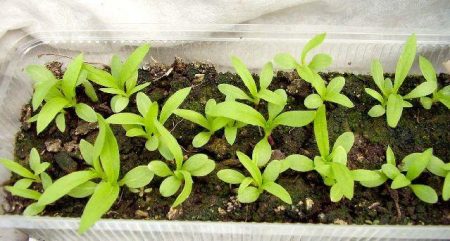
Sprouts dive into separate containers when a pair of true leaves appear on them. During transplantation, try not to damage the fragile roots. The first time the seedlings are fed 7-10 days after the pick. During the period of active growth, complex flower fertilizer is used. Before planting young plants on a flower bed, top dressing is applied 1 time in 2 weeks.
7-10 days before transplanting into the open ground, the seedlings are tempered, taking out into the street or balcony during the day. Seedlings of annual phloxes are planted in a permanent place at the end of May. The best time is evening or a cloudy day, when the rays of the sun can not damage the fragile sprouts.
Phlox transplantation to a permanent place
Annual phlox prefer sunny areas with fertile soil. They feel best in partial shade. You should not plant these flowers in places where water stagnates. Drummond Phlox is suitable for light non-clay soil with a slightly acidic or neutral reaction. Compost and coarse sand are added to heavy soil. The landing site is being prepared since the fall. Dig up the earth and make rotted manure. Liming of acidic soil is carried out.
Before planting, phlox seedlings are abundantly watered. The holes are dug at a distance of at least 20 cm from each other, water is poured into each and 150 g of ash are added. The seedling is placed in a hole, the roots are sprinkled with earth and carefully tamped. Plantings are watered with warm water. Then the trunk surface is sprinkled with dry soil. During the first two weeks, seedlings are watered every 2 days, and in the heat daily.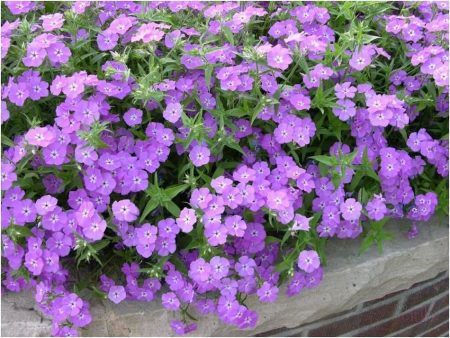
Landing Care Features
Drummond's phlox does not tolerate drought, but waterlogging is contraindicated because of its susceptibility to fungal diseases. On 1 m2 plantings spend 10 liters of water. Soil should be moistened in the afternoon. After watering or rain, the soil is loosened, removing weed grass. To form a strong root system in early July, phlox need to be spud. Tall varieties are tied to a support so that the shoots are not broken by the wind. Mulching of the root zone with a dry rotted manure layer of 2-3 cm will help reduce moisture evaporation.
In order for annual phloxes to please lush flowering until the frosts themselves, they must be regularly fed, taking into account the vegetation phase:
- At the end of May, when buds begin to appear on plants, potash fertilizers are introduced into the soil. A glass of wood ash and 10 g of potassium sulfate are mixed in a bucket of water. This fertilizer improves the quality of inflorescences and increases resistance to diseases. After 14 days, the phlox is fed with a superphosphate solution prepared in a ratio of 15 g per 10 l of water. Fertilizers are poured under the root.
- At the end of June, annual phloxes are fed with fertilizer for flowering plants. It can be replaced with liquid manure diluted with water in a proportion of 1:10. In late July, the soil is fertilized with a solution of ammonium nitrate in a proportion of 20 g per 10 liters of water. Such top dressing prolongs the flowering period, make the color more saturated and vibrant.

- Drummond's phlox life cycle ends with the formation of seed boxes. In autumn, plants are fed phosphorus-potassium fertilizers. The nutrient mixture is prepared from 20 g of superphosphate, 10 g of potassium sulfate and 10 l of water. Phosphorus is found in large quantities in bone meal, which can be added to the soil during cultivation. Such dressings contribute to the formation and maturation of seeds, increase the quality of seed.
Phlox feed in the evening. Liquid fertilizers are applied after heavy watering, and dry fertilizers are applied before rain or the next moistening of the soil.
A suitable instance for propagation is chosen even when the phlox blooms. A ribbon is tied to his stem. Hybrids marked “F1” are not suitable for collecting seed. they do not retain varietal traits in future generations.Yellowed seed boxes are cut with the shoot and placed into ripening in a paper bag. They are stored in a dry, dark place until the next season.
Pest and Disease Control
Most often, annual phloxes are affected by such diseases:
- phomosis;
- Septoria;
- variegation;
- powdery mildew;
- verticillosis.
As a prophylaxis of fungal infection, plants are irrigated with colloidal sulfur. The affected phlox is treated with Bordeaux fluid twice with an interval of 15 days. Bushes with signs of powdery mildew and variegation are immediately dug up and burned to prevent the spread of the disease.
Often, Drummond phlox bushes damage pests:
Nematode
The bushes are burned, and the soil is treated with nematicides, for example, Carbathion or Thiazone, 3 times every 20 days.
Naked slugs
An unfavorable condition for their habitat is regular loosening of the soil. The soil around the plantings is dusted with wood ash or tobacco dust.
Butterfly Caterpillars
To destroy them, the flowers are sprayed with an insecticide, for example Fitoverm or Actellik.
Drummond Phlox is an unpretentious, lushly flowering plant. If you follow the simple rules of sowing, you can get friendly seedlings and healthy seedlings. These annual flowers will be a wonderful decoration not only for flower beds, but also for the facade of the house. They captivate with a variety of shades and an unforgettable aroma.

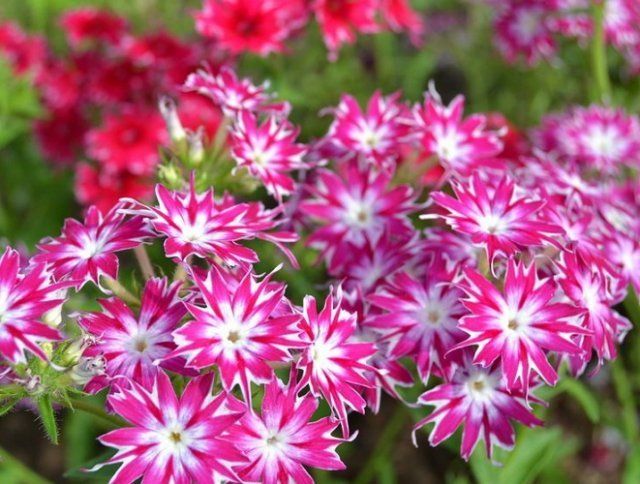
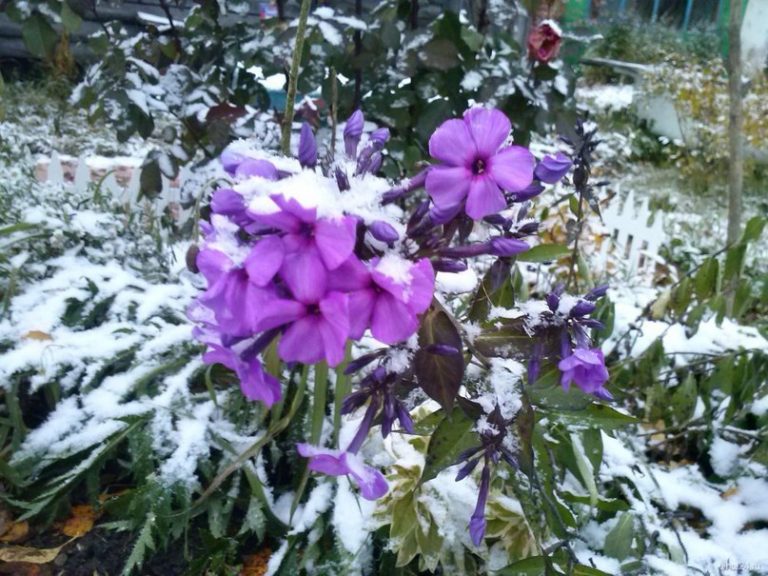
 How to get rid of powdery mildew on phlox
How to get rid of powdery mildew on phlox Planting awl phlox in the garden and caring for it
Planting awl phlox in the garden and caring for it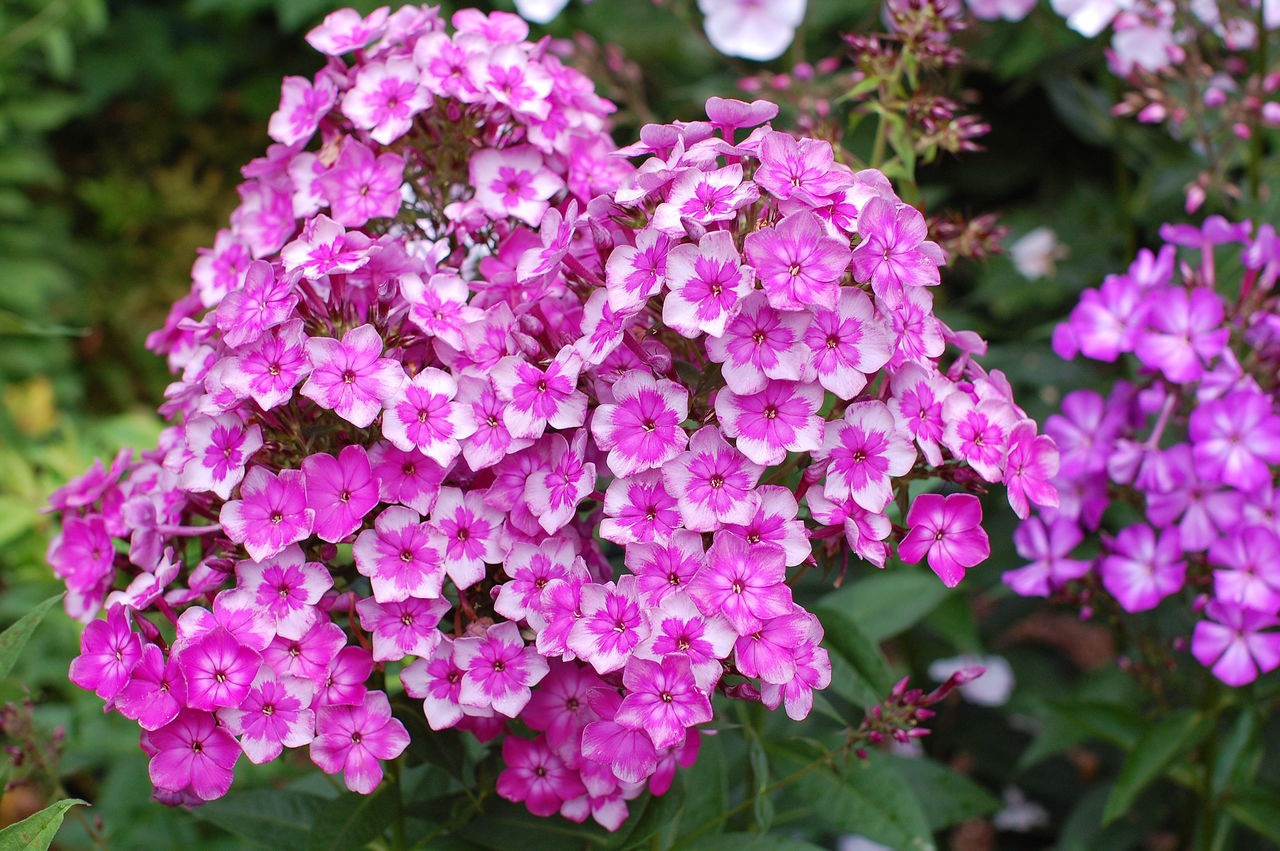 Phlox in the open ground: planting and care
Phlox in the open ground: planting and care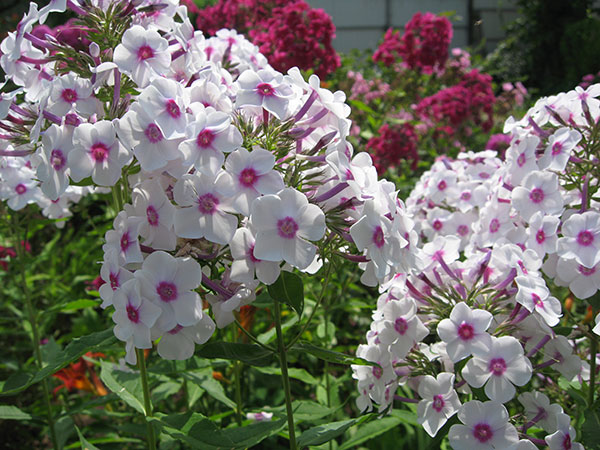 Phlox perennial: planting and care, photo
Phlox perennial: planting and care, photo